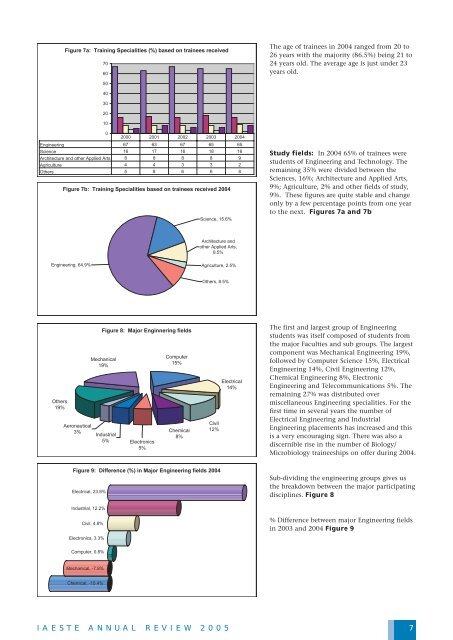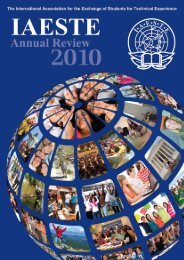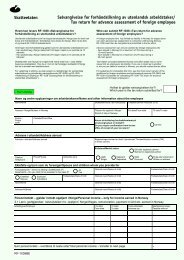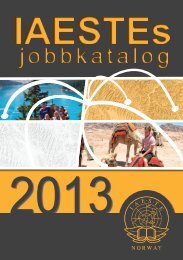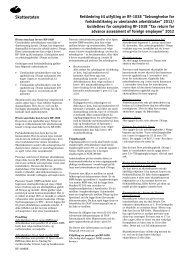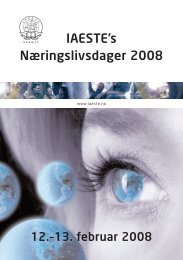View Annual Review - IAESTE
View Annual Review - IAESTE
View Annual Review - IAESTE
You also want an ePaper? Increase the reach of your titles
YUMPU automatically turns print PDFs into web optimized ePapers that Google loves.
The age of trainees in 2004 ranged from 20 to<br />
26 years with the majority (86.5%) being 21 to<br />
24 years old. The average age is just under 23<br />
years old.<br />
Study fields: In 2004 65% of trainees were<br />
students of Engineering and Technology. The<br />
remaining 35% were divided between the<br />
Sciences, 16%; Architecture and Applied Arts,<br />
9%; Agriculture, 2% and other fields of study,<br />
9%. These figures are quite stable and change<br />
only by a few percentage points from one year<br />
to the next. Figures 7a and 7b<br />
The first and largest group of Engineering<br />
students was itself composed of students from<br />
the major Faculties and sub groups. The largest<br />
component was Mechanical Engineering 19%,<br />
followed by Computer Science 15%, Electrical<br />
Engineering 14%, Civil Engineering 12%,<br />
Chemical Engineering 8%, Electronic<br />
Engineering and Telecommunications 5%. The<br />
remaining 27% was distributed over<br />
miscellaneous Engineering specialities. For the<br />
first time in several years the number of<br />
Electrical Engineering and Industrial<br />
Engineering placements has increased and this<br />
is a very encouraging sign. There was also a<br />
discernible rise in the number of Biology/<br />
Microbiology traineeships on offer during 2004.<br />
Sub-dividing the engineering groups gives us<br />
the breakdown between the major participating<br />
disciplines. Figure 8<br />
% Difference between major Engineering fields<br />
in 2003 and 2004 Figure 9<br />
I A E S T E A N N U A L R E V I E W 2 0 0 5 7


